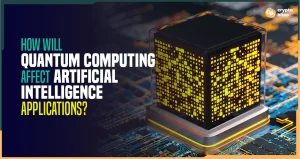
You Shall Pass! The Optimism Bridge Explained
If you’ve been following our past few blog posts, you’ve probably picked up on a few things about Ethereum.
If not, here’s a quick recap: Ethereum is a great blockchain, except for its tendency to occasionally be slow and pricey AF.
This is what’s known as a scalability issue. Layer 2 solutions like Polygon and Arbitrum are blockchains that run on top of Ethereum to help it solve these problems.
As ETH attempts to upgrade its way into a more scalable future, plenty of layer 2 solutions have rolled out to help pick up the legwork in the meantime.
Today we’ll be delving into another crowd favorite, which is known as Optimism.
Harnessing the power of Optimism
Optimism is a layer 2 solution built to handle pretty much any transaction you’d usually make on the Ethereum main net. It offers many of the same features and works so similarly that it might initially be mistaken for an ETH knockoff.
But Optimism was never intended to be an ETH competitor. Instead, it was developed to mirror and easily connect to Ethereum’s Layer 1.
What’s the point, you ask? Optimism’s biggest perk is that it offers the same benefits as ETH but can handle transactions faster and cheaper.
Whereas an Ethereum gas fee might be $100, Optimism can usually do it for a buck or so.
How Optimistic lends Ethereum a hand
Part of the reason that Ethereum is so secure is that every ETH transaction is validated by every node in its network. But, unfortunately, this is why it’s also so slow and expensive.
Imagine ETH as a packed store where thousands of different cashiers are sitting around with ledgers, all struggling to keep up with every transaction. After all, maintaining the most flawless, tamper-proof ledgers in history takes time.
To make matters worse, these ledger keepers are so demanding that you have to pay them a fee just for the pleasure of checking out. The busier the store is, the higher these fees will be.
Now imagine that you found out that there was another checkout option available upstairs.
So, you head up to level 2, where you find a much more laid-back group of cashiers. Unlike the competition downstairs, their lines seem to be moving at the speed of light.
Not only can they handle more transactions at a time, but they’re also checking out whole groups of people in a single transaction. As a result, their fees are significantly cheaper than the ones you’d pay on layer 1.
This is what Optimism’s layer 2 solution does for Ethereum’s layer 1. How? Due to the magic of a little something called…
Optimistic roll-ups
While several other layer 2 solutions now also utilize the power of the optimistic roll-up, Optimism pioneered the concept. As you might have gleaned from the example above, users can place transactions on Optimism without facing the same level of scrutiny.
See, Ethereum actually makes fraudulent transactions incredibly difficult. One of the reasons its nodes are all constantly updating their ledgers is to make sure every new transaction makes sense in relation to every other transaction in history.
Optimism is a little more…well, optimistic.
Optimism rolls up various transactions into one big optimistic bundle and assumes they’re all legit. Sounds a little less secure, right?
You might be surprised. As long as both parties in a transaction are happy and no one complains, everyone is good to go.
But Optimism transactions also come with a validation period. Every transaction is eventually published on-chain and subjected to Ethereum’s fraud proofs.
Should one party claim that the transaction was sketchy, the guys from level 1 will come up and give it a good once over. They’ll then get to the bottom of whether or not fraud was at play.
If so, they’ll void the transaction and slap the offending party with a fine. So while Ethereum’s outlook is more “make damn sure there’s never an issue,” Optimism focuses on ensuring problems are fixable after they occur.
If the trade-off sounds reasonable to you, then you may want to look into accessing Optimism via….
The Optimism Bridge
The Optimism Bridge is like the elevator you’d use to get from the chaos of the level 1 checkout to the chiller vibes upstairs on layer 2.
To transfer ETH assets to Optimism, head over to the newly released version of the Bridge and click on “connect” in the top right-hand corner. Then, sign into your wallet, grant it the permissions it requires, and you’ll be good to go.
Optimism also provides a withdrawal process allowing you to transfer your assets back to the ETH main net when you’ve completed your transactions.
There are also plenty of other bridging solutions that are part of the Optimism ecosystem.
Optimism is all about values
Not only has Optimism created a nice shortcut around some of ETH’s biggest challenges, but it’s also refreshingly philanthropic. The Optimism Foundation upholds Ethereum’s values and promotes growth and innovations.
They’ve pledged, “Until the project is fully decentralized, we will be donating all profits from running a centralized sequencer towards scaling and sustaining public goods.”
To date, they’ve distributed $1 million to public goods, not to mention saved users over $1 billion in gas fees.
Way to walk the talk, huh?
Sources
https://ethereum.org/en/developers/tutorials/optimism-std-bridge-annotated-code/




